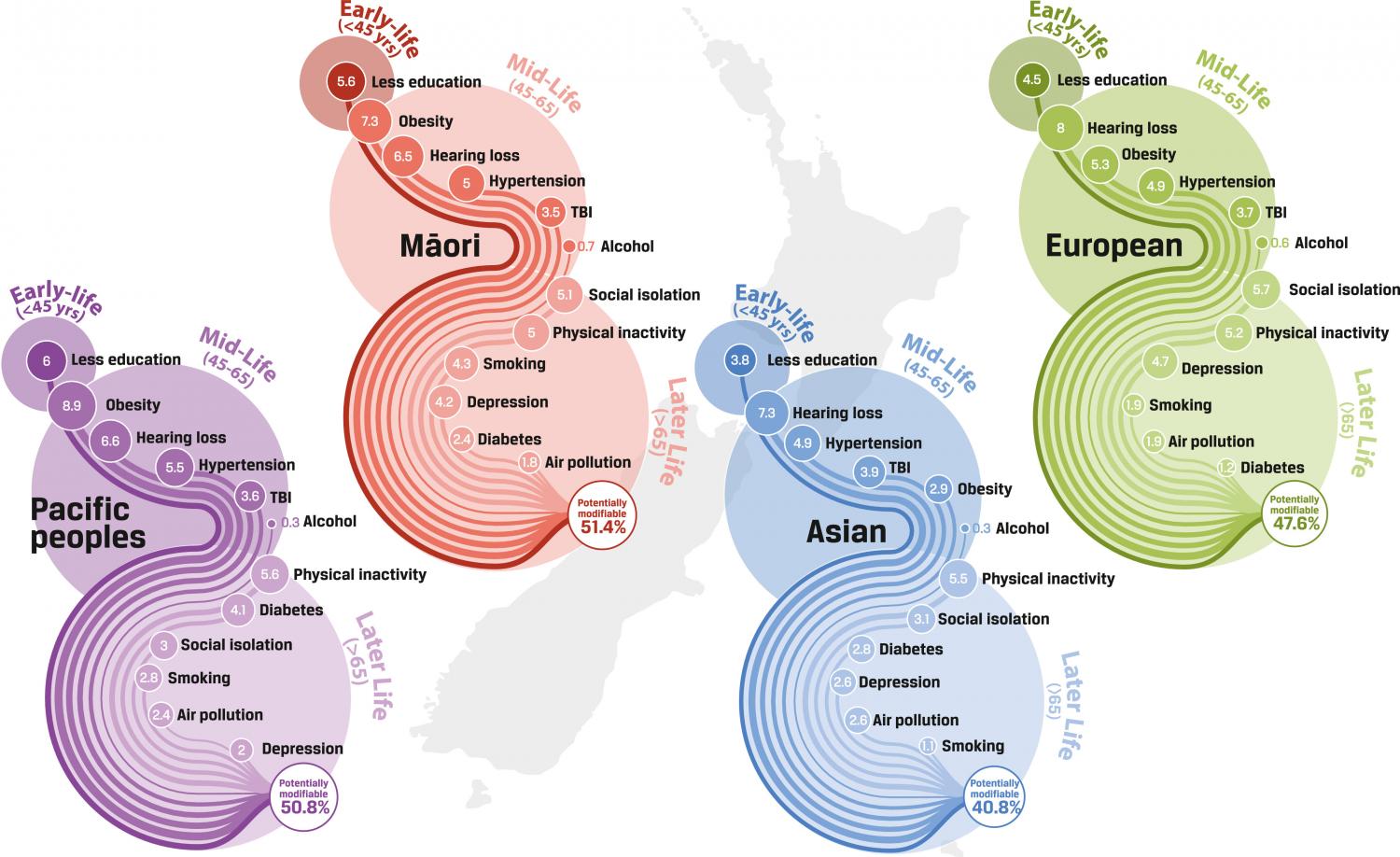
Background: Twelve potentially modifiable risk factors (less education, hypertension, obesity, alcohol, traumatic brain injury (TBI), hearing loss, smoking, depression, physical inactivity, social isolation, diabetes, air pollution) account for an estimated 40% of worldwide dementia cases. We aimed to calculate population attributable fractions (PAFs) for dementia for the four largest New Zealand ethnic groups (European, Māori, Asian, and Pacific peoples) to identify whether optimal dementia prevention targets differed by ethnicity. Methods: We calculated risk factor prevalence for 10 risk factors using the New Zealand Health Survey 2018/19 and published reports for hearing loss and TBI prevalences. We calculated the PAF for each risk factor using calculated prevalence and relative risk estimates from previous meta-analyses. To account for risk factor overlap, we calculated communality of risk factors and a weighted PAF. Findings: The weighted PAF for dementia was 47•7% overall in New Zealand, 47•6% for Europeans, 51•4% for Māori, 50•8% for Pacific peoples, and 40•8% for Asians. Highest PAFs for Europeans were hearing loss (8%) and social isolation (5•7%), and for Asians hearing loss (7•3%) and physical inactivity (5•5%). For Māori and Pacific peoples, highest PAFs were for obesity (7•3% and 8•9% respectively) and hearing loss (6•5% and 6•6%). Interpretation: New Zealand has higher dementia prevention potential than worldwide estimates with high prevalences of untreated hearing loss and obesity. The relative contribution of individual risk factors PAFs varies by ethnic group. Public health strategies for dementia prevention need to be tailored to these differences. Funding: Health Research Council of New Zealand (HRC:20/021).
